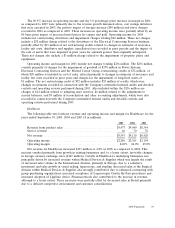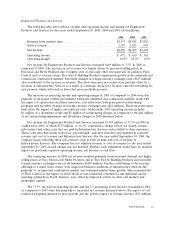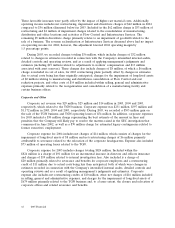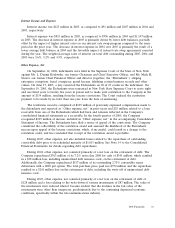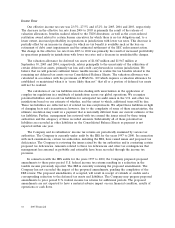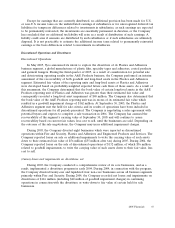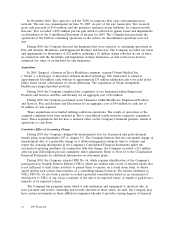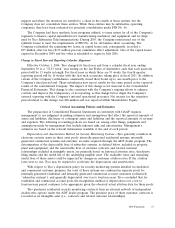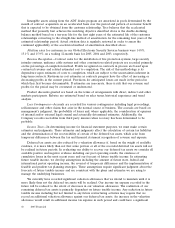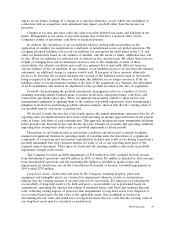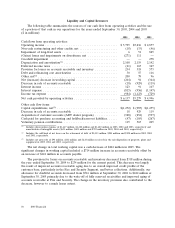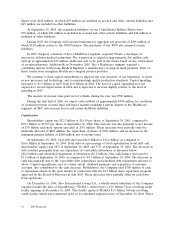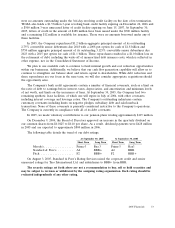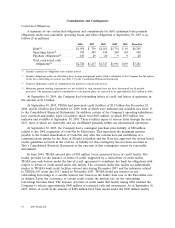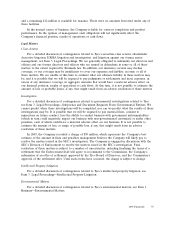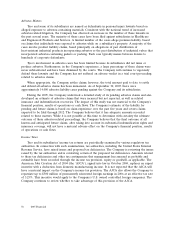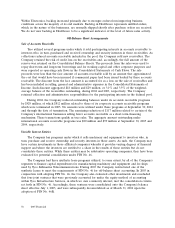ADT 2005 Annual Report Download - page 124
Download and view the complete annual report
Please find page 124 of the 2005 ADT annual report below. You can navigate through the pages in the report by either clicking on the pages listed below, or by using the keyword search tool below to find specific information within the annual report.Intangible assets arising from the ADT dealer program are amortized in pools determined by the
month of contract acquisition on an accelerated basis over the period and pattern of economic benefit
that is expected to be obtained from the customer relationship. Tyco believes that the accelerated
method that presently best achieves the matching objective described above is the double-declining
balance method based on a ten-year life for the first eight years of the estimated life of the customer
relationships converting to the straight-line method of amortization for the remaining four years of the
estimated relationship period. Actual attrition data is regularly reviewed in order to assess the
continued applicability of the accelerated method of amortization described above.
Attrition rates for customers in our Global Electronic Security Services business were 14.8%,
15.1% and 15.9% on a trailing 12-month basis for 2005, 2004 and 2003, respectively.
Revenue Recognition—Contract sales for the installation of fire protection systems, large security
intruder systems, undersea cable systems and other construction related projects are recorded primarily
on the percentage-of-completion method. Profits recognized on contracts in process are based upon
contracted revenue and related estimated cost to completion. The risk of this methodology is its
dependence upon estimates of costs to completion, which are subject to the uncertainties inherent in
long-term contracts. Revisions in cost estimates as contracts progress have the effect of increasing or
decreasing profits in the current period. Provisions for anticipated losses are made in the period in
which they first become determinable. If estimates are inaccurate, there is risk that our revenue and
profits for the period may be overstated or understated.
Product discounts granted are based on the terms of arrangements with direct, indirect and other
markets participants. Rebates are estimated based on sales terms, historical experience and trend
analysis.
Loss Contingencies—Accruals are recorded for various contingencies including legal proceedings,
self-insurance and other claims that arise in the normal course of business. The accruals are based on
management’s judgment, the probability of losses and, where applicable, the consideration of opinions
of internal and/or external legal counsel and actuarially determined estimates. Additionally, the
Company records receivables from third party insurers when recovery has been determined to be
probable.
Income Taxes—In determining income for financial statement purposes, we must make certain
estimates and judgments. These estimates and judgments affect the calculation of certain tax liabilities
and the determination of the recoverability of certain of the deferred tax assets, which arise from
temporary differences between the tax and financial statement recognition of revenue and expense.
Deferred tax assets are also reduced by a valuation allowance if, based on the weight of available
evidence, it is more likely than not that some portion or all of the recorded deferred tax assets will not
be realized in future periods. In evaluating our ability to recover our deferred tax assets we consider all
available positive and negative evidence including our past operating results, the existence of
cumulative losses in the most recent years and our forecast of future taxable income. In estimating
future taxable income, we develop assumptions including the amount of future state, federal and
international pretax operating income, the reversal of temporary differences and the implementation of
feasible and prudent tax planning strategies. These assumptions require significant judgment about the
forecasts of future taxable income and are consistent with the plans and estimates we are using to
manage the underlying businesses.
We currently have recorded significant valuation allowances that we intend to maintain until it is
more likely than not the deferred tax assets will be realized. Our income tax expense recorded in the
future will be reduced to the extent of decreases in our valuation allowances. The realization of our
remaining deferred tax assets is primarily dependent on future taxable income. Any reduction in future
taxable income including but not limited to any future restructuring activities may require that we
record an additional valuation allowance against our deferred tax assets. An increase in the valuation
allowance would result in additional income tax expense in such period and could have a significant
48 2005 Financials



